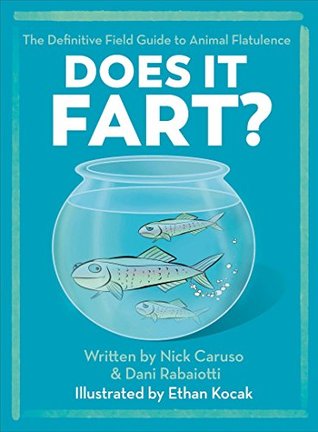 BLACKSBURG, Va. (AP) — Who farted?
BLACKSBURG, Va. (AP) — Who farted?
It’s an age old question, though asking who dealt it rarely yields a straightforward answer.
But thanks to the best-selling work of a Virginia Tech researcher and his Twitter pal, you can at least narrow down the list of suspects in the animal kingdom.
Nick Caruso, a postdoctoral associate at Virginia Tech studying amphibian ecology, co-authored a book with Dani Rabaiotti, a student in the United Kingdom, on the topic of which animals fart. “Does it Fart? The Definitive Field Guide to Animal Flatulence” published by Hachette books has shot to No. 8 on the New York Times monthly best-seller list in the science category since it was released in April.
The 133-page book explores the habits of a wide array of animals with about 200-word descriptors. There are also a number of illustrations of the animals with wisps of gas coming out of their backsides.
The whole thing started as a joke on social media.
Caruso’s co-author Rabaiotti, a zoology doctoral candidate at the London Zoology Society, was posed a question by her younger brother. He wanted to know if snakes farted, so she turned to Twitter, where she asked an expert.
Caruso saw the tweet, and in an effort to make a joke, started the hashtag #DoesItFart. As scientist Twitter friends of the duo began tweeting about the hashtag, Caruso decided to create a Google spreadsheet, which contained various animal species and information about such practices of those animals.
Experts from around the world began to chime in, and by the time freelance writer Jason Bittel published a piece about the hashtag in the Washington Post in January 2017, the spreadsheet had taken off in the scientist Twitter community.
After that, book publishers reached out to Caruso and Rabaiotti about writing and publishing the book.
“We were just kind of like ‘sure,’ ” Caruso said. “We never thought anybody would read it other than our family and friends.”
Caruso and Rabaiotti turned entries from that spreadsheet into the book. They have scientific paper citations, videos and conversations with scientists who study the species named in the book.
There are 80 species featured in the book and the two authors wrote half the entries. Another social media friend, Ethan Kocak, provided the illustrations. The three collaborators have never met in person.
The authors take the time to define a fart — because it isn’t a medical or scientific term — as “any gas expelled from the end of an animal opposite to its mouth. and if it is audible or not.”
A vast majority of animals do it.
Some of those animals range from red foxes, to termites to sharks. However, birds don’t. And, Caruso said, to his surprise, sloths don’t either. Instead, they expel the gases produced from digestion by breathing them out.
Caruso and Rabaiotti have already collaborated on a book No. 2 due to come out this fall called “True or Poo? The Definitive Field Guide to Filthy Animal Facts and Falsehoods.” That book looks at myths about animals and gives a wide array of weird facts, with the unifying theme being that they’re all a little gross, Caruso said.
The reception and placement of the fart book on the New York Times monthly science best-sellers list has been shocking, Caruso said.
It’s also positive for his work at Tech.
Caruso works in the wildlife ecology lab of professor Carola Haas in Tech’s College of Natural Resources and Environment. He’s passionate about conservation. His work focuses on ecology and conservation of Appalachian salamanders, other amphibians and reptiles.
For him, the book has been the ultimate scientific outreach.
It’s exposing young and old to a side of science that isn’t normally discussed or even acknowledged. He’s heard from parents, mostly in the UK where the book was published last fall, whose children have taken an interest in biology because of the book, all because of its novel concept.
It’s a way to make young people learn, even if they’re only doing so subconsciously, he said.
“These kids think it’s hilarious and then it gets them interested in science,” Caruso said.
“And finding a way to build interest in science and nature is important.”



